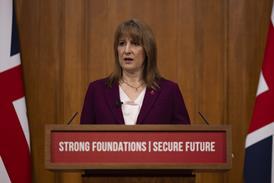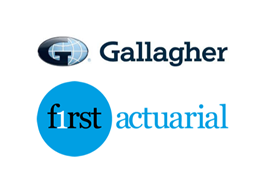With connection deadlines coming and going and many organisations already linked up, independent consultant Richard Smith assesses the government’s progress on dashboards and looks at what is still left to do to make them a reality.
Almost exactly a year ago, during the general election campaign, I scored the outgoing Conservative government’s progress on pensions dashboards.
My yardstick was the industry’s report to government, delivered way back in October 2017, which listed the 10 essential things that the government must do to make dashboards a reality.
One year on, Pensions Expert has asked me to update the scoring, assessing how far Labour has moved things on during its first year since coming to power.
The starting position: the 2024 end-of-term dashboards report
In June 2024, I gave the outgoing government a score of 6½ out of 10.
Several industry commentators were critical of this relatively high score, feeling it flattered the previous government.
However, it reflected the significant progress made over the seven years since 2017, including: enacting the necessary legislation for dashboards, establishing the Pensions Dashboards Programme (PDP) under the supervision of the Money and Pensions Service (MaPS), and starting work on the MoneyHelper Pensions Dashboard.

The 2024 report card
Catch up with Richard’s 2024 report in this Pensions Expert article from June 2024. Read more
Labour’s 2025 end-of-term dashboards report
If last year’s score felt a little high, then this year’s might feel quite harsh. Using the same scoring system, Labour has only nudged up progress to 7 out of 10.
“Because of the groundwork done over the past 12 months, there’s the prospect of much delivery progress over the next 12 months to summer 2026.”
Richard Smith
Labour has recommitted to the dashboards policy, and many officials have done much preparatory work in the background, but in terms of hard delivery of the 10 essential items, only Action 5 (emboldened in the table below) has changed score, due to the integration of the GOV.UK One Login identity service that was announced in September 2024.
However, because of the groundwork done over the past 12 months, there’s the prospect of much delivery progress over the next 12 months to summer 2026. By then, we could reach 8 or 9 out of 10, and be within sight of UK consumers actually using a dashboard.
Summer 2025 progress against the 2017 dashboards actions
The table below summarises the scores, with the detailed rationale for each score explained after the table.
| Action | Score | Summary Status as at June 2025 |
|---|---|---|
|
1. Deliver a government dashboard |
½ |
While the MaPS MoneyHelper Pensions Dashboard has reached its private beta phase, it is still unavailable for consumers to use (score unchanged) |
|
2. Enable private sector dashboards |
1 |
HM Treasury secondary legislation was in place, and the Financial Conduct Authority’s (FCA) Conduct of Business rules were consulted on, before July 2024 (score unchanged) |
|
3. Regulate private sector dashboards |
½ |
There remains no timeline for when firms will be able to apply to the FCA for authorisation to operate a private sector dashboard (score unchanged) |
|
4. Establish a delivery entity |
½ |
There remains no single entity responsible for ensuring that the delivery work of the different government bodies involved is coordinated (score unchanged) |
|
5. Deploy a central identity service |
1 |
The GOV.UK One Login identity service is now integrated with the PDP central digital architecture (score up from ½ to 1) |
|
6. Create a central digital architecture |
½ |
While pension providers and schemes are now connecting to the central digital architecture, the system remains untested until live citizen testing starts (score unchanged) |
|
7. Agree an implementation plan |
½ |
There is a timetable for live citizen testing, but not for the public launch, of the MoneyHelper Pensions Dashboard (score unchanged) |
|
8. Compel schemes to provide data |
1 |
Legislation in place prior to July 2024, connections now underway from April 2025 (score unchanged) |
|
9. Agree data standards with industry |
1 |
Standards in place prior to July 2024, now officially approved by the secretary of state (score unchanged) |
|
10. Make state pension data available |
½ |
The Department for Work and Pensions has nearly, but not quite, completed live connection of the state pension (score unchanged) Update, 10 July: The DWP has confirmed that the state pension is now fully connected to the dashboards ecosystem. |
|
Government’s total progress score |
7 out of 10 |
|
The report card, analysed
Action 1: Deliver a government dashboard (score = ½)
In November 2024, the MaPS MoneyHelper Pensions Dashboard (MHPD) passed its mandatory alpha Service Standard Assessment (SSA) and, in February 2025, it was demonstrated at a PDP webinar, alongside plans for live citizen testing to commence from summer 2025.
Despite this progress, however, the score remains ½, as it is still a work in progress.
Action 2: Enable private sector dashboards (score = 1)
All the work to create the necessary HM Treasury secondary legislation and FCA Conduct of Business Sourcebook rules for private sector dashboard operators was done under the previous government, so the score for this was already 1.
Action 3: Regulate private sector dashboards (score = ½)
While the FCA rules for private sector dashboard operators were added to the FCA’s handbook in November 2024, there is still no timeline for when firms will be able to apply to the regulator for authorisation to operate a private sector dashboard.
It’s been well reported that I told the Work and Pensions Committee, in March 2025, how “it breaks my heart that I do not think, even though your constituents desperately need and want them, we are going to see any private sector dashboards”.
Dashboards coalition disbands amid concerns over high regulatory bar

If I’m right, then the government’s score will never reach 10 out of 10. If I’m proved wrong, no one will be happier than me. Except maybe the Association of British Insurers, which made the very strong case for private sector dashboards in a report on the topic in June 2025, especially in a world with both targeted support and default retirement solutions.
For now, the score remains ½.
Action 4: Establish a delivery entity (score = ½)
Ironically, the Pensions Dashboards Programme, in place since 2019 and formerly called the “Industry Delivery Group”, isn’t delivering any dashboards. PDP only covers the central digital architecture (Action 5 below) and standards (Action 9).
Delivery of all the other elements of the dashboards ecosystem is a multi-party endeavour. In May 2025, the chair of the Work and Pensions Committee wrote to the pensions minister asking: “Who is responsible for overseeing the work of the different bodies whose work is essential for the delivery of dashboards and what mechanisms have they put in place to ensure the work is co-ordinated?”
Unfortunately, the minister’s reply merely stated that “DWP has overall responsibility”, and failed to answer the critical question of who is in overall charge of coordinating the delivery of all the different elements of the ecosystem. So the score for this remains ½.
Action 5: Deploy a central identity service (score = 1)
Better news on this action. In September 2024, the PDP announced that the identity service to be used by the dashboards ecosystem would be GOV.UK One Login. This has subsequently been integrated with the central digital architecture (see Action 6 below) ahead of the live citizen testing of the MoneyHelper Pensions Dashboard, so the score for this action has increased from ½ to 1.
Action 6: Create a central digital architecture (score = ½)
Pension providers and schemes are now connecting to the central digital architecture at scale. The first was in April 2025, and I am posting monthly updates of “Logos connected so far” on LinkedIn.
However, the overall end-to-end ecosystem remains untested until live citizen testing of the MoneyHelper Pensions Dashboard starts this summer. So again, it’s still a work in progress, and the score remains ½.
Action 7: Agree an implementation plan (score = ½)
There is a timetable for live citizen testing, but not for the public launch, of the MoneyHelper Pensions Dashboard – the government-backed dashboard.
“When can people use a dashboard?” is the only question most people want to ask, especially journalists.

In April 2025, the pensions minister, Torsten Bell, was interviewed on the BBC Radio 4 Money Box programme (listen from 07:00-09:00). Presenter Paul Lewis asked: “Give me some idea when people can look at their pensions. Never mind big insurance companies joining it [i.e. connecting their data], no one’s interested in that, though of course it’s got to happen. When can I log on and look at my pensions?”
The minister replied: “Well, I think we’re talking about a couple of years … when we’ll see widespread use.”
Maybe some time in 2027, but who knows?
Of course, it all depends on how well the live citizen testing of the MoneyHelper dashboard goes, and the launch implementation plan subsequently developed. The score for now remains ½.
Action 8: Compel schemes to provide data (score = 1)
All the work to create this compulsion legislation was done under the previous government, so the score for this was already 1.
What’s new is that, in September 2024, the Pensions Regulator (TPR) published its Compliance and Enforcement Policy. TPR also refreshed its Dashboards Guidance in June 2025.
Action 9: Agree data standards with industry (score = 1)
Most of the work to create the data and other standards (with which data providers must comply) was done under the previous government, so the score for this was already 1.
The update is that, in March 2025, the Secretary of State formally approved V2.0 of the Data Standards, as well as the other necessary standards.
Action 10: Make state pension data available (score = ½)
I understand the DWP has very nearly, but not quite, completed live connection of the state pension to the dashboards ecosystem. Sorry everyone, the score remains ½ until it’s ‘job done’.
What’s left for the government to do?
What’s left from industry’s 2017 list of 10 key requirements from government and regulators to move from 7 out of 10 to (nearly) full marks?
(Bear in mind, as explained above, that 10 out of 10 is unachievable until we see private sector dashboards.)
- Action 1: A citizen-tested MoneyHelper Pensions Dashboard must be delivered. This can also…
- Action 6: … deliver extensive live testing of the central digital architecture, with connected data providers, including…
- Action 10: … getting the state pension connected. This testing will all contribute to…
- Action 4: … the programme partners (i.e. all industry firms involved, plus the many government bodies involved) delivering as a coherent whole, and…
- Action 7: … publishing, and executing, a detailed plan to make the MoneyHelper dashboard available to the general public, including the future model for live operations.
On the plus side, the considerable groundwork delivered over the past 12 months has generated great potential to move to 9 out of 10 over the next year, to summer 2026.
And who knows, sometime in 2027, we might see UK consumers starting to benefit from widespread use of the MoneyHelper Pensions Dashboard – a positive impact to be felt for decades to come.
Richard Smith is an independent pensions dashboards consultant.
This article was updated on 10 July to reflect the news that the DWP has confirmed the connection of the state pension with the dashboards ecosystem. See Richard’s LinkedIn post here.






















